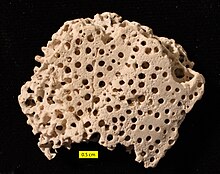-
E. cretacea Portlock, 1843
-
E. michelini (Nardo, 1845)
-
E. glomerata (Michelin, 1846)
-
E. nardina (Michelin, 1846)
-
E. duvernoyi (Michelin, 1847)
-
E. irregularis (d’Orbigny, 1850)
-
E. ramosa (d’Orbigny, 1850)
-
E. parisiensis (d’Orbigny, 1850)
-
E. dissociata (Duchassaing, 1850)
-
E. duvernoysii (Duchassaing, 1850)
-
E. pectita (Michelotti, 1861)
-
E. strombi (Duchassaing de Fonbressin & Michelotti, 1864)
-
E. megastoma (Fischer in d’Archiac et al., 1866)
-
E. falunica (Fischer in d’Archiac et al., 1866)
-
E. cerithii (Fraas, 1867)
-
E. paradoxa (Fischer, 1868)
-
E. praecursor (Fischer, 1868)
-
E. cerithiorum (Fischer, 1868)
-
E. tubulosa (Seguenza, 1879)
-
E. perforata (Seguenza, 1882)
-
E. intricata (Seguenza, 1882)
-
E. catenata (Frič, 1883)
-
E. exogyrarum (Frič, 1883)
-
E. mammillata (Chapman, 1907)
-
E. peregrinator (Chapman, 1907)
-
E. bullini (Annandale, 1920)
-
E. devonica (Clarke, 1921)
-
E. radiciformis (Lehner, 1937)
-
E. microtuberum (Stephenson, 1941)
-
E. retiformis (Stephenson, 1952)
-
E. cateniformis Bromley & D’Alessandro, 1984
-
E. geometrica Bromley & D’Alessandro, 1984
-
E. laquea Bromley & D’Alessandro, 1984
-
E. ovula Bromley & D’Alessandro, 1984
-
E. volzi Bromley & D’Alessandro, 1984
-
E. depressa Ghare, 1985
-
E. dendritica Pleydell & Jones, 1988
-
E. gigantea Bromley & D’Alessandro, 1989
-
E. magna Bromley & D’Alessandro, 1989
-
E. parva Bromley & D’Alessandro, 1989
-
E. astrologica Mikuláš, 1992
-
E. solaris Mikuláš, 1992
-
E. goniodes Bromley & Asgaard, 1993
-
E. cervicornis Fürsich et al., 1994
-
E. convoluta Edinger & Risk, 1994
-
E. micra Wisshak, 2008
-
E. nana Wisshak, 2008
-
E. cracoviensis Bromley & Uchman in Bromley et al., 2009
-
E. resinensis Santos et al., 2011
-
E. colaria Wisshak et al., 2017
-
E. morrisi Wisshak, Knaust & Bertling, 2019
-
E. tuberculata Wisshak, Knaust & Bertling, 2019
|




